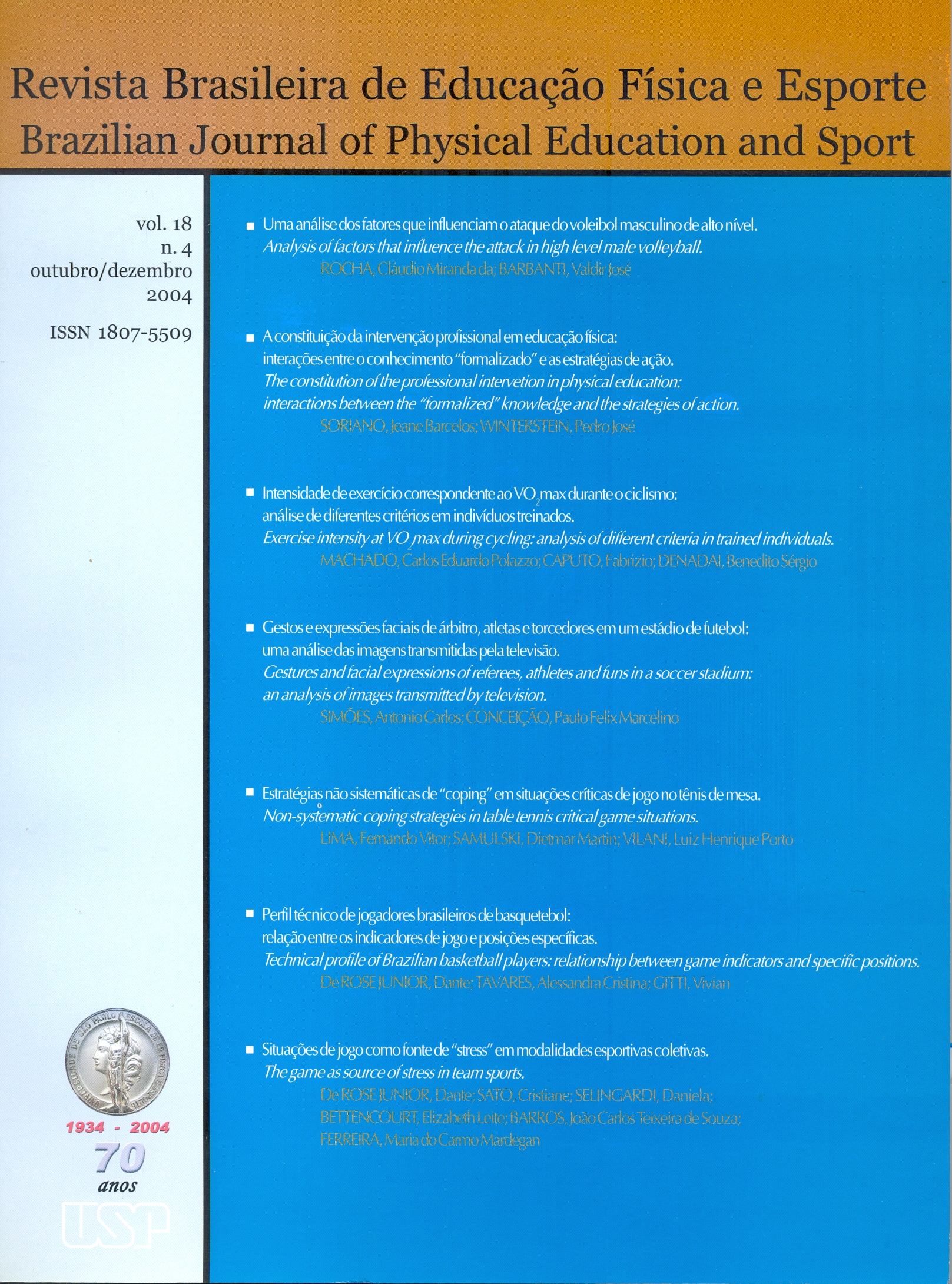Non-systematic coping strategies in table tennis critical game situations
DOI:
https://doi.org/10.1590/S1807-55092004000400005Keywords:
Stress, Coping Strategies, Table TennisAbstract
The purposes of this study were to identify and to describe the non-systematic coping strategies in critical game situations in table tennis. In addition, it was aimed to analyze thei efficiency and the athlete's objective intention of the strategy chosen. Five athletes of the Brazilian women.s all-star team, with ages ranging from 16 to 22, took part in this study. The data were collected through video filming, questionnaires, observations, quantification of the critical data and the techniques of selfcontrol, besides the use of the self-confrontation method. The main strategies used were motor techniques (67.71%), cognitive techniques (9.53%) and combined techniques (24.76%). The cognitive techniques showed themselves to be more efficient than the others in relation to success in the dispute for two points after the utilization of this strategy (p = 0.04). As for the athletes. objectives with the application of each category of technique, concentration, followed by the application of tactical means and reevaluation.Downloads
Download data is not yet available.
Downloads
Published
2004-12-01
Issue
Section
naodefinida
License
Todo o conteúdo da revista, exceto onde está identificado, está licenciado sob uma Licença Creative Commons (CC-BY)
How to Cite
Lima, F. V., Samulski, D. M., & Luiz Henrique Porto, V. (2004). Non-systematic coping strategies in table tennis critical game situations . Brazilian Journal of Physical Education and Sport, 18(4), 363-375. https://doi.org/10.1590/S1807-55092004000400005


